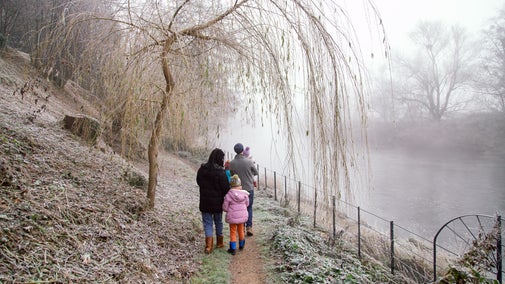The long Wind in the Willows walk
Oxfordshire, Buckinghamshire & Berkshire
Follow this moderate 5-mile circular walk exploring the rural community of Cookham Dean before venturing into the Woodland Trust's Wild Wood at Quarry and Fultness Woods. The walk passes through farmland, woodland and along the quiet village lanes that inspired Kenneth Grahame, author of the classic children’s tale Wind in the Willows.
Start point
Cookham Dean Common National Trust Car Park, Cookham, Maidenhead SL6 6PJ. Grid ref: SU862838Trail information
More near here
Maidenhead and Cookham Commons
An historic landscape full of natural beauty

The short Wind in the Willows walk
A 3-mile circular walk around Cookham Dean in Berkshire and the woodlands that inspired author Kenneth Grahame's Wild Wood in his children's novel Wind in the Willows.

Cookham and Cock Marsh walk
Enjoy stunning views across the Thames Valley while following riverside paths on the dog-friendly Cookham and Cock Marsh walk.

Cookham wetland and wildlife trail
Discover the wildlife and wetlands of the Thames Valley, while enjoying the views of The Mount at Cookham Dean, Cliveden House and Taplow Court.

Get in touch
Pinkneys Green, Pinkneys Drive, Maidenhead, Berkshire, SL6 6QD
Our partners

We’ve partnered with Cotswold Outdoor to help everyone make the most of their time outdoors in the places we care for.
You might also be interested in
Walking
Explore some of the finest landscapes in our care on coastal paths, accessible trails, woodland walks and everything in between. Find the best places to walk near you.

Staying safe at National Trust places
The special places in National Trust care sometimes come with a few risks for visitors, be it coastline or countryside. Find out how to keep safe throughout your visits.

Cotswold Outdoor: our exclusive walking partner
Learn about the National Trust’s ongoing partnership with Cotswold Outdoor. Find out how they help us care for precious places and the exclusive discount available for National Trust supporters.

Walking in Oxfordshire, Buckinghamshire and Berkshire
From gentle strolls for little legs to longer hikes through the rolling Chiltern hills, these are some of the best walks in Oxfordshire, Buckinghamshire and Berkshire.

Follow the Countryside Code
Help to look after National Trust places by observing a few simple guidelines during your visit and following the Countryside Code.



